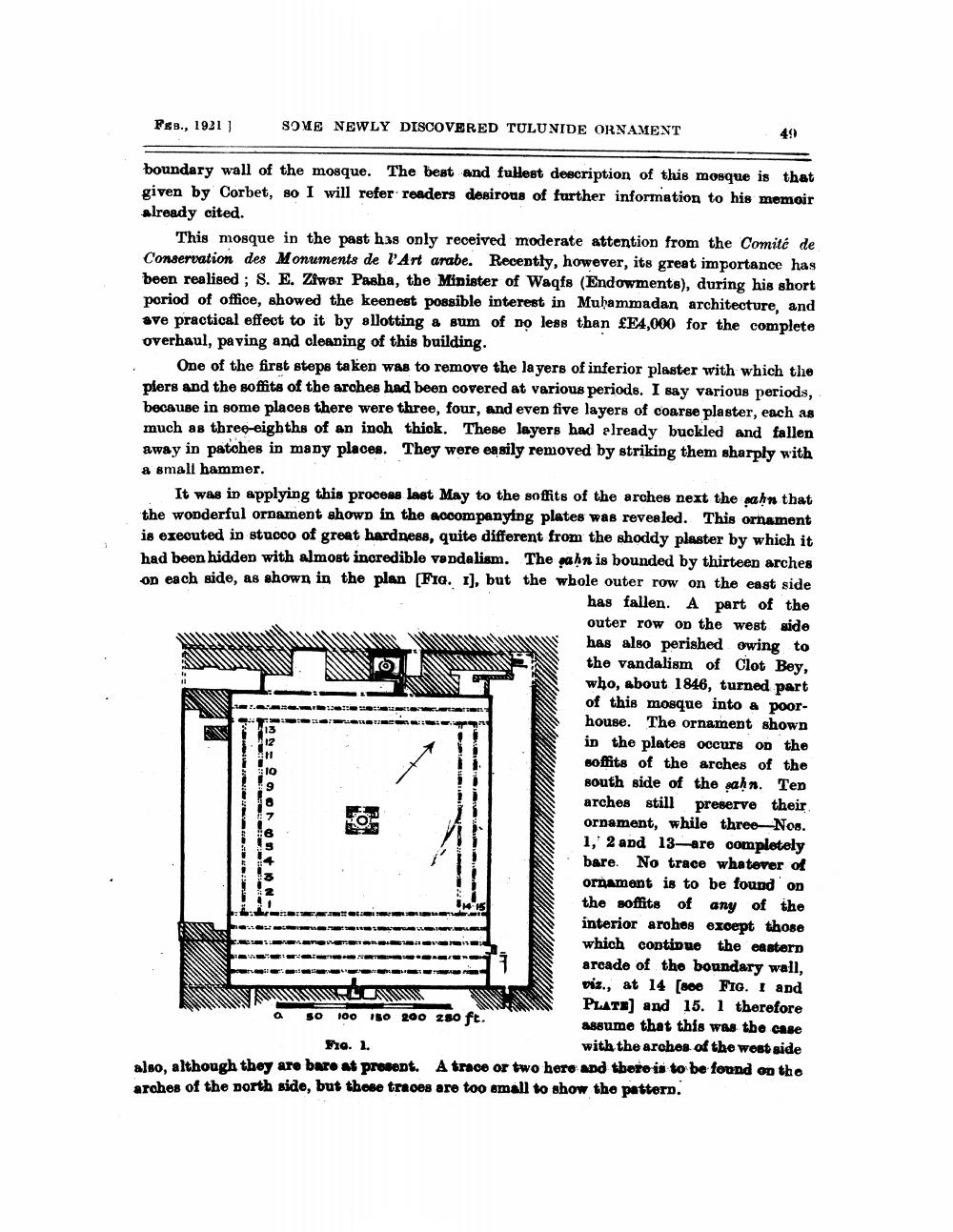________________
FEB., 1921 1
SOME NEWLY DISCOVERED TULUNIDE ORNAMENT
boundary wall of the mosque. The best and fullest description of this mosque is that given by Corbet, so I will refer readers desirous of further information to his memoir already cited.
This mosque in the past has only received moderate attention from the Comité de Conservation des Monuments de l'Art arabe. Recently, however, its great importance has been realised; S. E. Ziwar Pasha, the Minister of Waqfs (Endowments), during his short poriod of office, showed the keenest possible interest in Muḥammadan architecture, and ave practical effect to it by allotting a sum of no less than £E4,000 for the complete overhaul, paving and cleaning of this building.
49
One of the first steps taken was to remove the layers of inferior plaster with which the piers and the soffits of the arches had been covered at various periods. I say various periods, because in some places there were three, four, and even five layers of coarse plaster, each as much as three-eighths of an inch thick. These layers had already buckled and fallen away in patches in many places. They were easily removed by striking them sharply with a small hammer.
It was in applying this process last May to the soffits of the arches next the saḥn that the wonderful ornament shown in the accompanying plates was revealed. This ornament is executed in stucco of great hardness, quite different from the shoddy plaster by which it had been hidden with almost incredible vandalism. The saḥn is bounded by thirteen arches on each side, as shown in the plan [FIG. 1], but the whole outer row on the east side has fallen. A part of the outer row on the west side has also perished owing to the vandalism of Clot Bey, who, about 1846, turned part of this mosque into a poorhouse. The ornament shown in the plates occurs on the soffits of the arches of the south side of the saḥn. Ten arches still preserve their ornament, while three-Nos. 1, 2 and 13-are completely bare. No trace whatever of ornament is to be found on the soffits of any of the interior arches except those which continue the eastern arcade of the boundary wall, viz., at 14 [see FIG. I and PLATE] and 15. 1 therefore assume that this was the case with the arches of the west side
50
O
100 150 200 280 ft.
FIG. 1.
also, although they are bare at present. A trace or two here and there is to be found on the arches of the north side, but these traces are too small to show the pattern.




